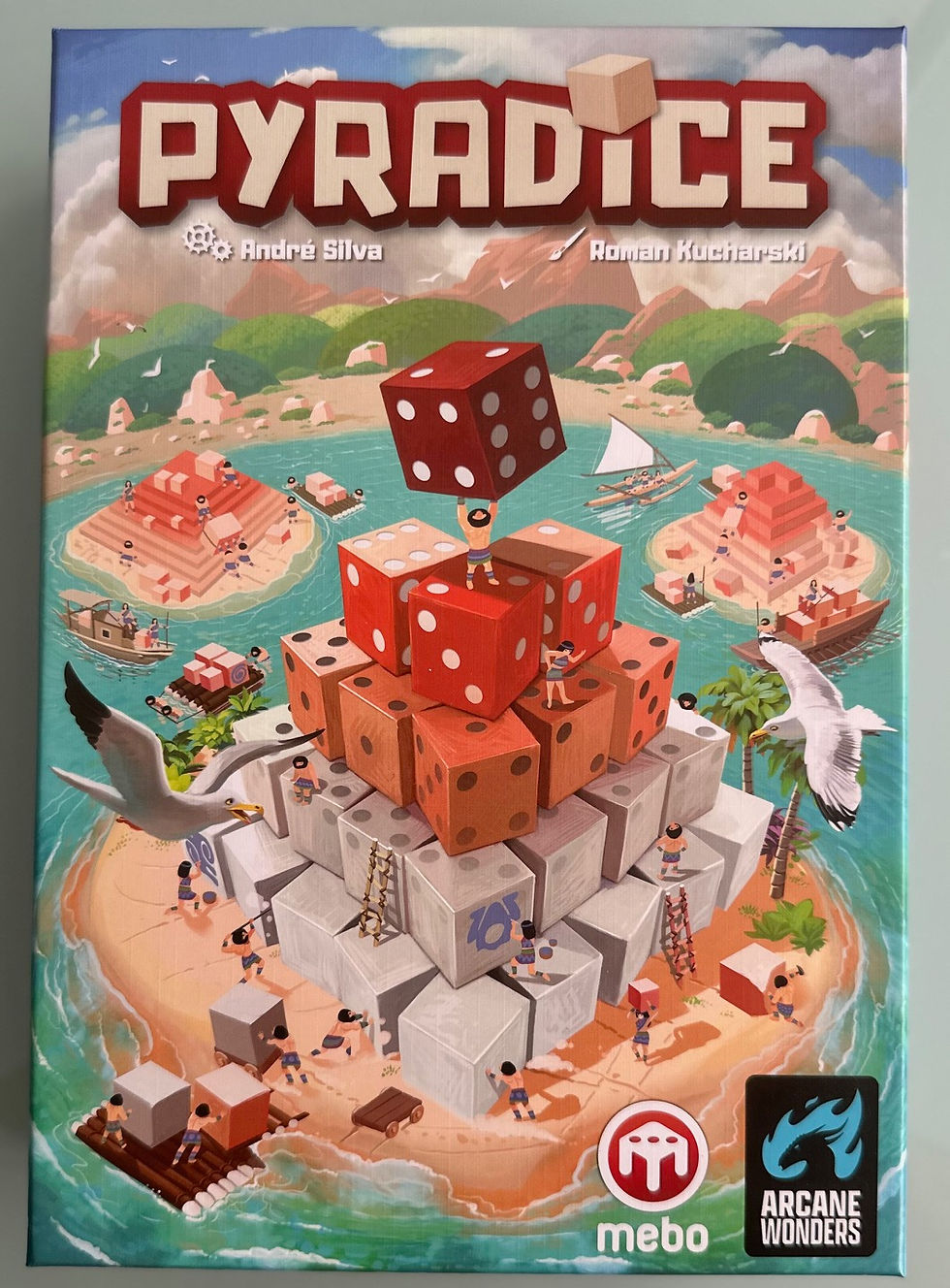Pyramix
- Board's Eye View

- Sep 5, 2017
- 2 min read
This is a simple but pleasingly tactile abstract set-collection game made up of 56 cubes and a base tray. The cubes may look like six-sided dice but they are not: each cube has the same symbol on all six sides. That symbol will be an ankh, crane or eye in one of four colours, plus four cubes with a cobra symbol.

The cubes are assembled randomly on the tray so as to form a pyramid. You might think this would mean some time and effort to set each game up but you’d be wrong. As you can see in the Board's Eye View video below, the cubes quite literally fall into place so the pyramid is quickly assembled and you are ready to play.
The game involves players taking turns to remove a cube. They can take any cube that has two or three sides exposed but the base cannot be left exposed. Cubes with an ankh symbol are worth 1 point, cubes with a crane are worth 2 points and cubes with an eye symbol are worth 3 points. Cobra cubes are worth nothing. Once all legal moves are exhausted (ie: the only cubes remaining are those resting on the base with none on top of them), any cobra cubes on the base are removed, along with all cubes adjacent to them; finally, those cubes of each colour that are left on the base are allocated to the player who has collected the most ankhs in that colour. This means that, though the ankhs are individually worth least, it may be worth collecting them in preference to the more individually valuable crane and eye cubes in order to be the player to secure the cubes on the base.
Pyramix is easy to teach and learn, and it is quick to play. The rules say the game is for two to four players, and certainly it works well with two, three or four, but there is actually no reason why the game cannot be played with more. The player count does not materially affect the playing time. Each game is likely to be completed within 15 minutes regardless of the number of players.
If you’re expecting a game of deep strategy, this will disappoint. It’s not Gamewright’s answer to chess. It is a game, however, that rewards players who plan a move ahead. The pyramid shape means that players can always see which cubes will be made accessible by the cube they select, and they also need to decide whether to try to leave higher scoring cubes in order to go for the ankh majority in a colour with lots of scoring cubes in the base layer. Players can take cubes from underneath others, so there are opportunities to manipulate the position of cubes and ‘lock’ cubes into position on the base, where they cannot be moved or taken and where they may be claimed at the end by the player with an ankh majority in that colour.
Pyramix is a game that can be played by both adults and children, and its obvious visual appeal means you’ll have no difficulty getting it played – so definitely one to consider if you like tactile abstract games.




